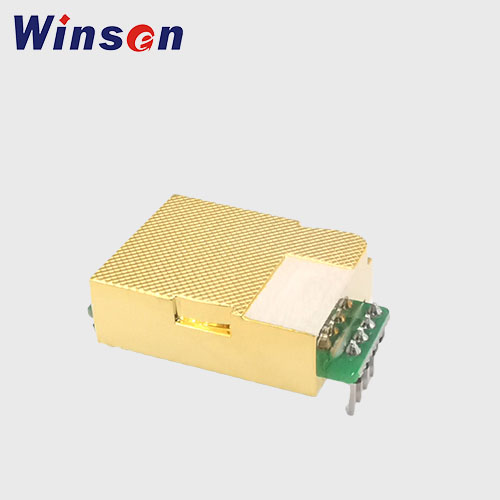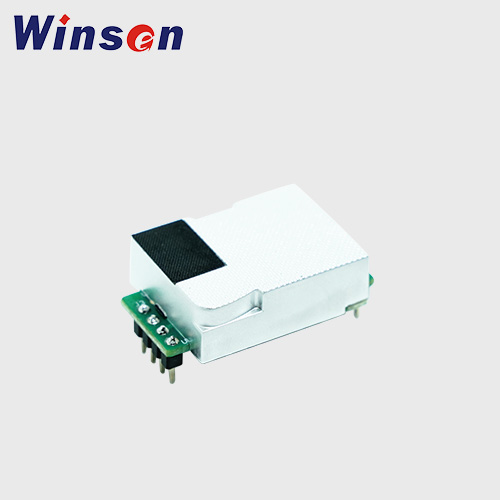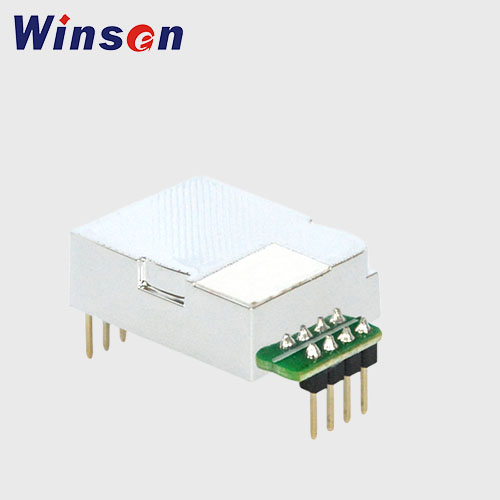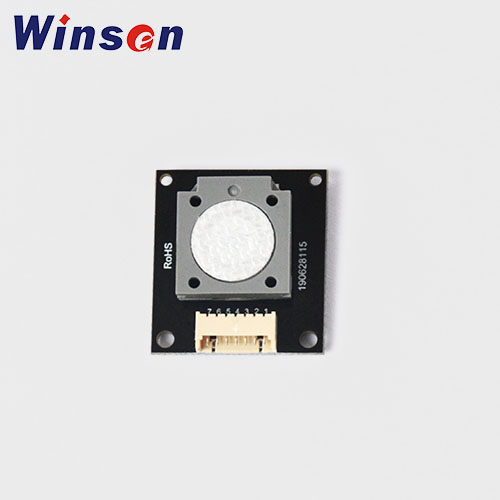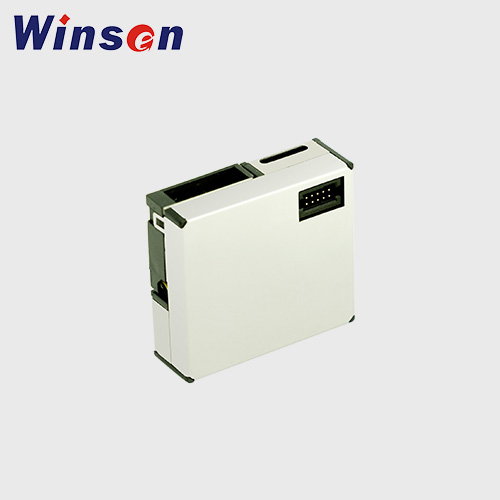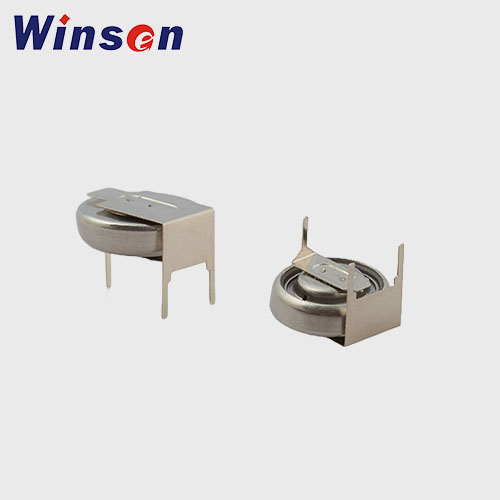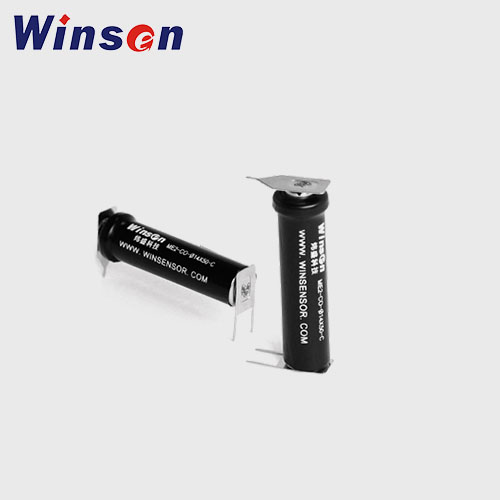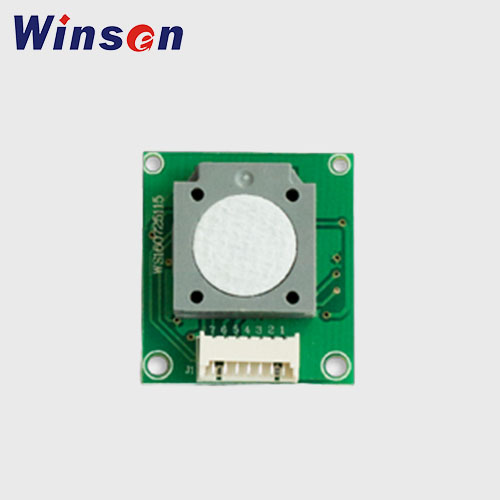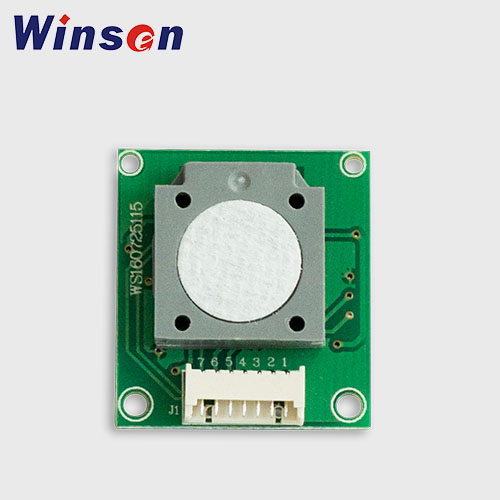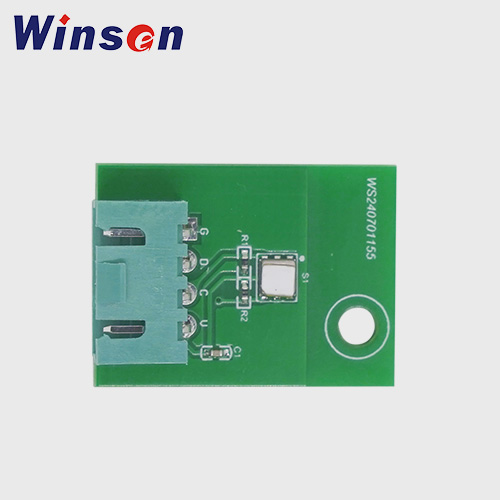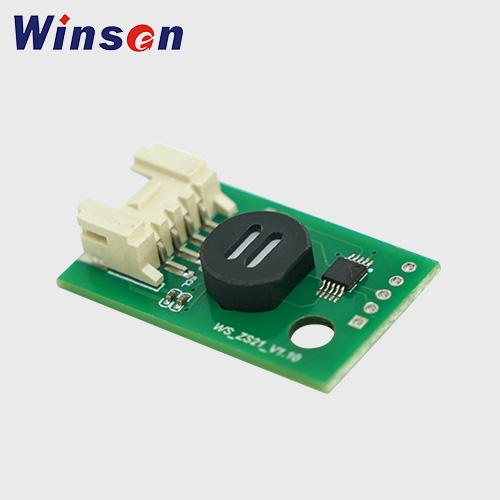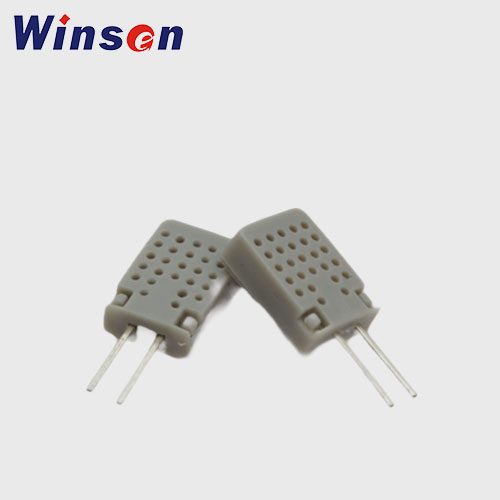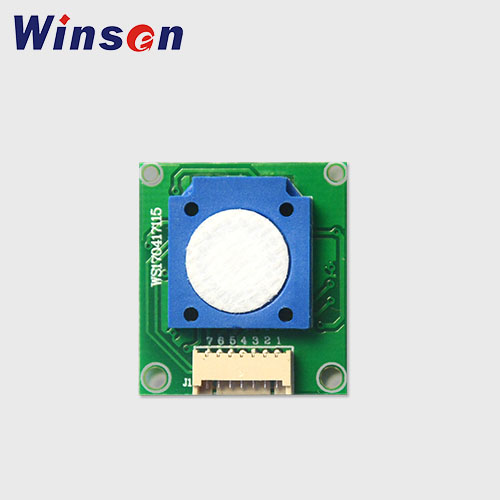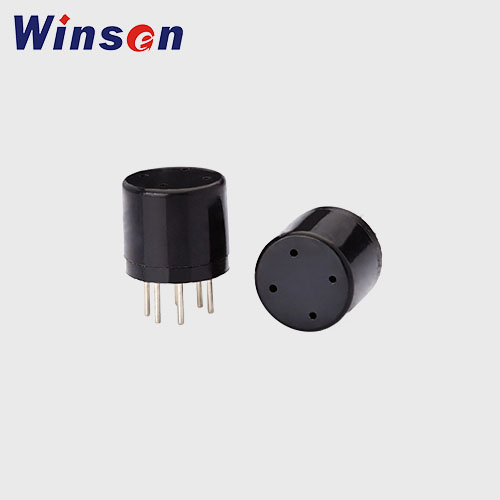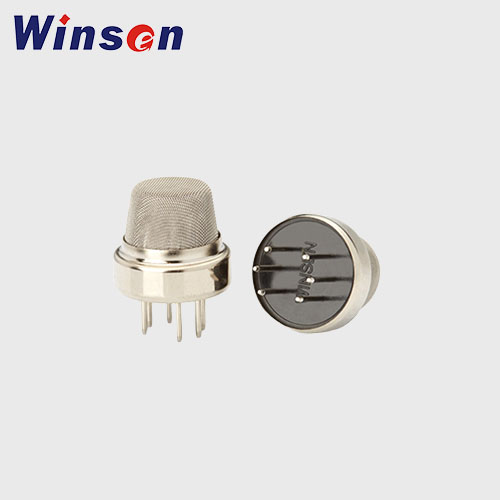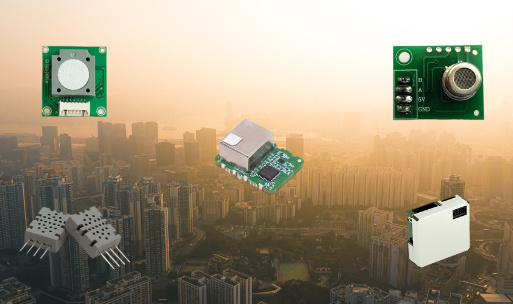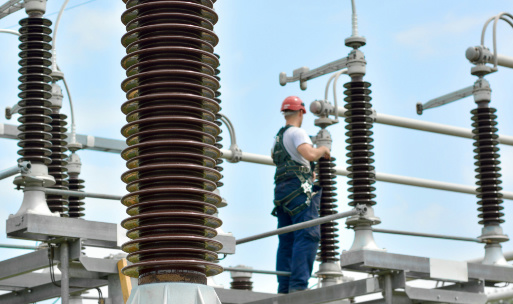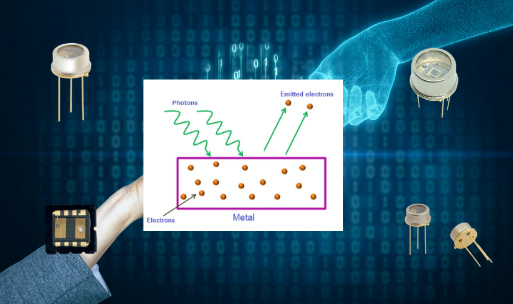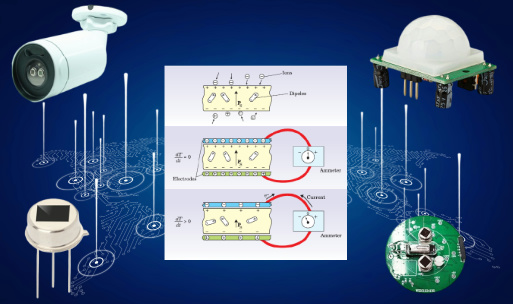IAQ Sensor(Indoor Air Quality Sensor): A Complete Guide
1. Introduction
Indoor Air Quality (IAQ)is increasingly recognized as a crucial aspect of human health and comfort, especially in urban environments, commercial buildings, smart homes, schools, and hospitals. Poor air quality indoors can contribute to respiratory problems, fatigue, headaches, and even long-term chronic diseases.
To manage and maintain clean indoor air, IAQ sensors are employed to monitor key environmental pollutants and climate parameters. These sensors play a central role in air purification systems, HVAC control, building automation, and environmental safety.
2. What is IAQ (Indoor Air Quality)?
IAQ refers to the air quality within and around buildings and structures, particularly in relation to the health and comfort of occupants.
Key factors influencing IAQ:
- Chemical pollutants (CO₂, VOCs, NO₂)
- Biological contaminants (mold, bacteria, allergens)
- Particulate matter (PM2.5, PM10)
- Environmental conditions (humidity, temperature, air pressure)
3. What is an IAQ Sensor?
An IAQ sensor is a multi-parameter electronic device that detects and quantifies various pollutants and environmental conditions within indoor spaces. These sensors may measure gases, particles, and climate-related parameters, then transmit the data to a monitoring or control system.
They are integrated into:
- HVAC systems
- Air purifiers
- Smart home hubs
- Building management systems (BMS)
- Portable air quality monitors
4. Key Pollutants Measured by IAQ Sensors
| Pollutant | Description | Health Effects |
|---|---|---|
| CO₂ | Exhaled by humans; indicator of ventilation | Fatigue, headaches, reduced productivity |
| VOCs | Emitted by paints, cleaners, plastics | Eye irritation, dizziness, cancer risks |
| PM2.5/PM10 | Fine dust, smoke, allergens | Respiratory and cardiovascular problems |
| CO | Incomplete combustion product | Fatal at high concentrations |
| Formaldehyde | Emitted by furniture, glues, insulation | Carcinogenic, irritation |
| NO₂/O₃ | From gas stoves, outdoor pollution | Respiratory distress |
| Humidity | Excessive moisture promotes mold | Discomfort, mold growth |
| Temperature | Affects comfort and productivity | Fatigue, poor cognitive performance |
5. Types of IAQ Sensors
IAQ sensors may be:
a. Single-Pollutant Sensors
- Designed to detect one specific pollutant (e.g., CO₂, PM2.5)
b. Multi-Sensor Modules
- Integrated chips that monitor several pollutants simultaneously
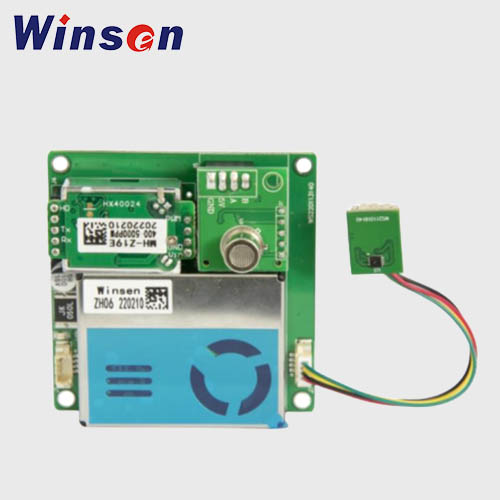
Multi-in-One Sensor Module ZPHS01C
- PM2.5, CO2, CH2O, TVOC,Temperature&Humidity
- CO2: 400~5000ppm; PM2.5: 0-1000μg/m³; CH2O: 0-1.6ppm; VOC: 4 level; Temperature: 0-65℃ (Accuracy±0.5℃); Humidity: 0-100%RH (Accuracy±3%)
- Read More
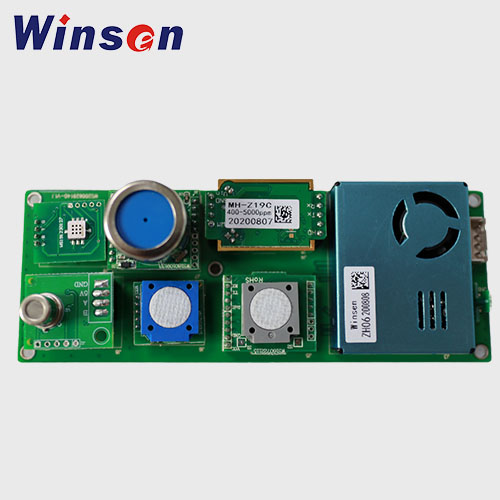
Multi-in-One ZPHS01B Sensor Module
- CO2. PM2.5. CH2O. O3. CO. TVOC. NO2. Temperature. Humidity
- See Manul
- Read More
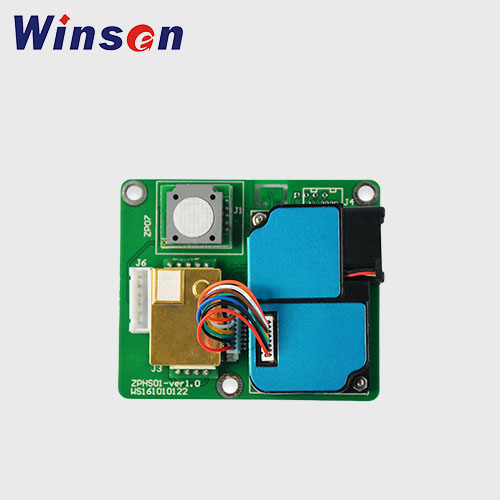
ZPHS01 Multi-in-One Sensor Module (HCHO version)
- CO2, PM2.5, CH2O, VOC, Temperature, Humidity
- CO2: 0-5000ppm; PM2.5: 0-1000μg/m³; CH2O: 0-1.6ppm; VOC: 4 level; Temperature: 0-65℃ (Accuracy±0.5℃); Humidity: 0-100%RH (Accuracy±3%)
- Read More
c. Networked IAQ Systems
- Use multiple sensors across a building with centralized control
6. Technologies Used in IAQ Sensors
| Technology | Pollutants Measured | Advantages |
|---|---|---|
| NDIR (Non-Dispersive Infrared) | CO₂ | Accurate, long life |
| Electrochemical | CO, NO₂, O₃, SO₂ | Sensitive, specific |
| Photoionization Detectors (PID) | VOCs | Wide VOC detection range |
| Metal Oxide Semiconductor (MOS) | VOCs, CO, NH₃ | Cost-effective, compact |
| Laser Scattering | PM2.5, PM10 | Real-time particle count |
| MEMS Hygrometers | Humidity | Small size, fast response |
| Thermistors | Temperature | Stable, widely used |
7. Parameters Measured by IAQ Sensors
An IAQ sensor system may include:
- CO₂ concentration (ppm)
- Total VOCs (TVOCs) (ppb)
- PM1.0 / PM2.5 / PM10 (μg/m³)
- Carbon monoxide (CO)
- Formaldehyde (HCHO)
- Relative Humidity (%)
- Temperature (°C or °F)
- Air Pressure (hPa)
- Ozone and Nitrogen Dioxide
CO2 Sensor
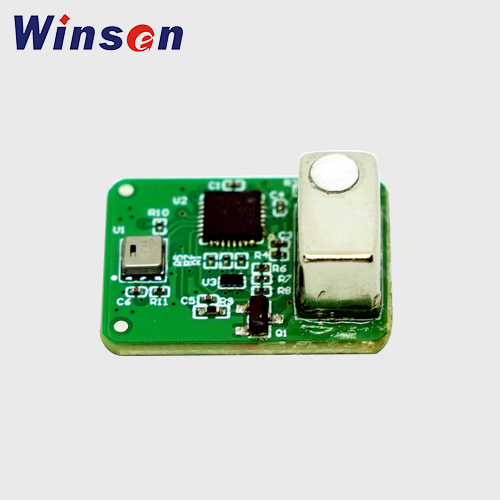
H101-CO2-Z8S-U-40kP Photoacoustic PAS Carbon Dioxide CO2 Sensor
- Carbon Dioxide CO2
- 400 - 5000 ppm (expandable to 40000 ppm)
- Read More
VOC Sensor
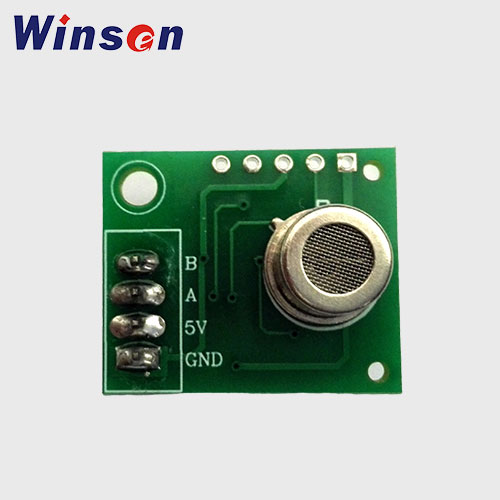
ZP16-A Air-Quality Detection Module
- Formaldehyde, benzene, carbon monoxide, hydrogen, alcohol, ammonia, smoke of cigarette, essence &etc
- VOC:0-2.000mg/m3 CO2:350-2000ppm CH2O:0-1.000mg/m3
- Read More
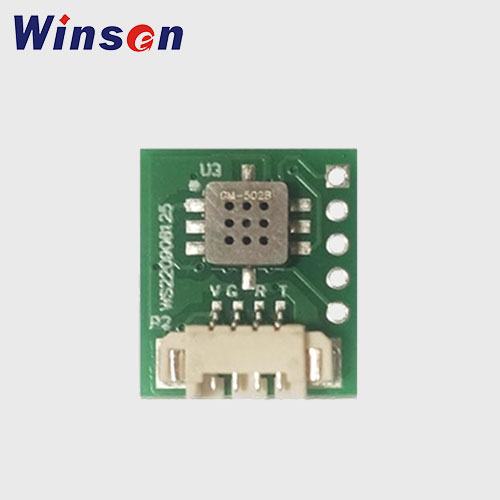
Digital ZM106-VOC Module
- VOC, Ethanol, formaldehyde, toluene and other organic volatiles
- 0~10mg/m3
- Read More
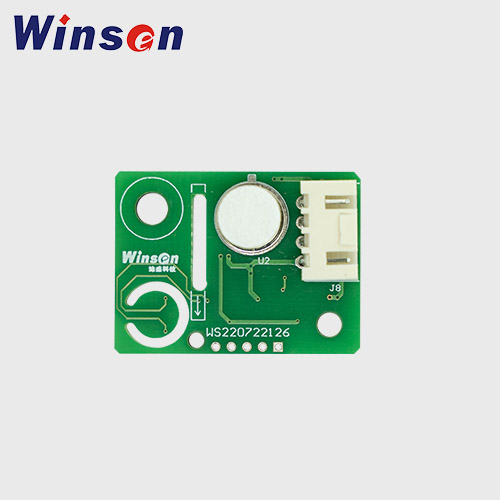
ZPS20 Digital Sensor Module - VOC Temperature Humidity
- Formaldehyde, benzene, VOC, Temperature, Relative humidity
- 0~10mg/m3
- Read More
PM Sensor
CO Sensor
HCHO Sensor
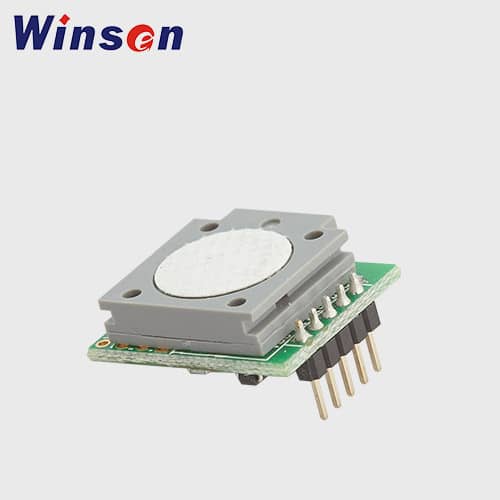
Electrochemical HCHO Formaldehyde Sensor Module ZE08B-CH2O
- CH2O, HCHO, Formaldehyde
- 0~1.6ppm
- Read More
Temperature and Humidity Sensor
Ozone Sensor
8. Working Principle of IAQ Sensors
- Sensing: Each sensor type uses a specific physical or chemical method to detect its target pollutant.
- Signal Processing: Detected signals are converted into electrical output (analog or digital).
- Calibration: Sensors are calibrated for accuracy, often using reference gases.
- Data Output: The processed data is sent via I²C, UART, Modbus, or wireless protocols (Wi-Fi, Zigbee, LoRa).
- Display and Analysis: Results are visualized on displays or uploaded to the cloud for remote monitoring.
9. Integration with Smart Systems
Modern IAQ sensors are compatible with:
- Smart home systems (Google Home, Alexa)
- HVAC controllers (dynamic ventilation)
- BMS and SCADA systems
- IoT platforms with cloud storage and analytics
- Mobile apps with real-time air quality insights
They often feature:
- Wi-Fi, Bluetooth, Zigbee, NB-IoT
- APIs for integration
- Alert systems (visual/audible or via app)
10. Applications of IAQ Sensors
Residential
- Smart thermostats
- Air purifiers
- Living rooms, bedrooms, nurseries
Commercial
- Offices and meeting rooms
- Shopping malls
- Schools and universities
Healthcare
- Clinics and hospitals
- Nursing homes
Industrial
- Cleanrooms
- Manufacturing plants
- Server rooms and data centers
Transportation
- Vehicle cabins
- Aircraft cabins
- Subway stations
11. Benefits of IAQ Monitoring
Health Protection: Early detection of pollutants prevents respiratory problems
Energy Savings: Smart ventilation systems optimize airflow
Regulatory Compliance: Helps meet indoor air quality standards
Productivity Enhancement: Clean air improves focus and comfort
Data-Driven Insights: Historical trends reveal environmental patterns
Allergen Control: Reduces asthma and allergy triggers
12. IAQ Standards and Regulations
| Standard / Guideline | Organization | Key Parameters |
|---|---|---|
| ASHRAE 62.1 | ASHRAE (USA) | CO₂, ventilation |
| EPA IAQ Tools for Schools | US EPA | PM, CO₂, humidity |
| WHO Guidelines | WHO | PM2.5, VOCs, CO |
| RESET Air Standard | GIGA | Real-time IAQ monitoring |
| LEED Certification | USGBC | IAQ credits in green building |
| WELL Building Standard | IWBI | Human-centric IAQ metrics |
13. IAQ Index and Interpretation
IAQ sensors may report results as an IAQ Index, often using color-coded levels:
| IAQ Rating | Description | PM2.5 (μg/m³) | CO₂ (ppm) | TVOC (ppb) |
|---|---|---|---|---|
| 0–50 (Good) | Excellent air quality | <12 | <600 | <200 |
| 51–100 (Moderate) | Acceptable | 12–35 | 600–1000 | 200–400 |
| 101–150 (Unhealthy for Sensitive Groups) | 35–55 | 1000–1400 | 400–600 | |
| 151–200 (Unhealthy) | Poor air quality | >55 | >1400 | >600 |
14. Challenges in IAQ Sensing
- Sensor drift and degradation over time
- Cross-sensitivity (e.g., VOC sensors reacting to humidity)
- Need for periodic calibration
- Data overload in multi-sensor networks
- False readings due to temperature/humidity interference
15. IAQ Sensor Selection Criteria
When choosing an IAQ sensor, consider:
- Target pollutants and accuracy requirements
- Operating temperature and humidity ranges
- Communication protocols (I²C, UART, Modbus, BLE)
- Power consumption (battery vs. mains)
- Response time and recovery time
- Calibration support and sensor lifespan
- Certifications (CE, RoHS, FCC, ISO)
16. Future Trends in IAQ Monitoring
- AI-powered air quality prediction
- Low-power, battery-operated IAQ nodes
- Integration with Smart City platforms
- Self-calibrating sensors with cloud assistance
- Smartphone-based real-time IAQ mapping
- Machine learning for pollutant source identification
- Personal wearable IAQ sensors
17. Frequently Asked Questions (FAQs)
Q1: What does an IAQ sensor do?
It measures the concentration of indoor pollutants such as CO₂, VOCs, PM2.5, and others, and may also monitor temperature and humidity.
Q2: How accurate are IAQ sensors?
High-end IAQ sensors offer accuracy of ±30 ppm for CO₂ and ±10% for PM2.5. Accuracy depends on sensor type and calibration.
Q3: Can IAQ sensors detect viruses?
No. They cannot directly detect viruses but can detect environmental conditions (like poor ventilation or high PM) that increase transmission risks.
Q4: How often should IAQ sensors be calibrated?
Typically every 6–12 months, depending on the sensor and usage conditions.
Q5: Are IAQ sensors necessary for homes?
Yes, especially in areas with pollution, allergens, or poor ventilation. They help maintain a healthy living environment.
18. Conclusion
IAQ sensors are a cornerstone of modern environmental monitoring. By providing real-time insights into indoor pollutants and climate conditions, these devices empower users to create healthier, smarter, and more energy-efficient spaces.
From residential comfort and office productivity to regulatory compliance and public health, the role of IAQ sensors continues to grow as awareness and technology evolve. Whether standalone or integrated into smart systems, these sensors represent a vital investment in well-being and sustainability
